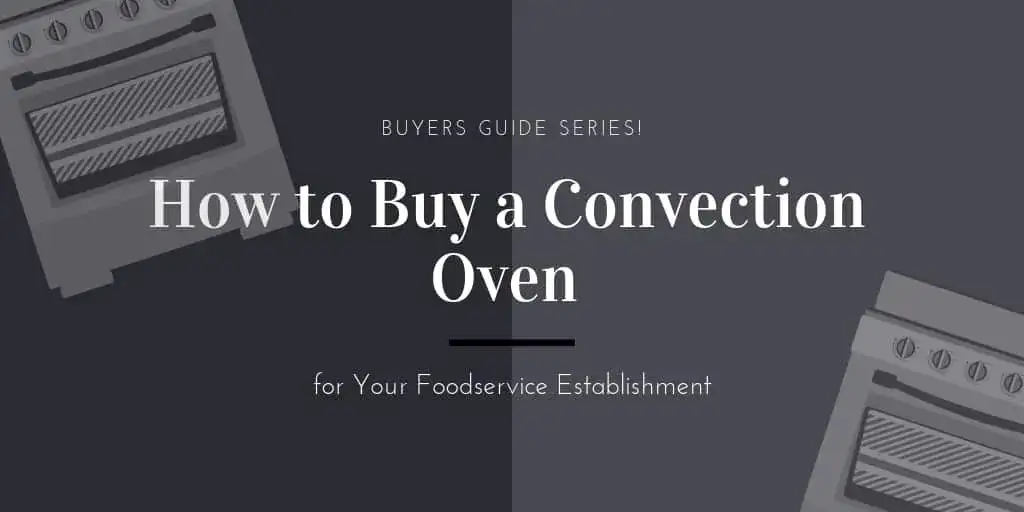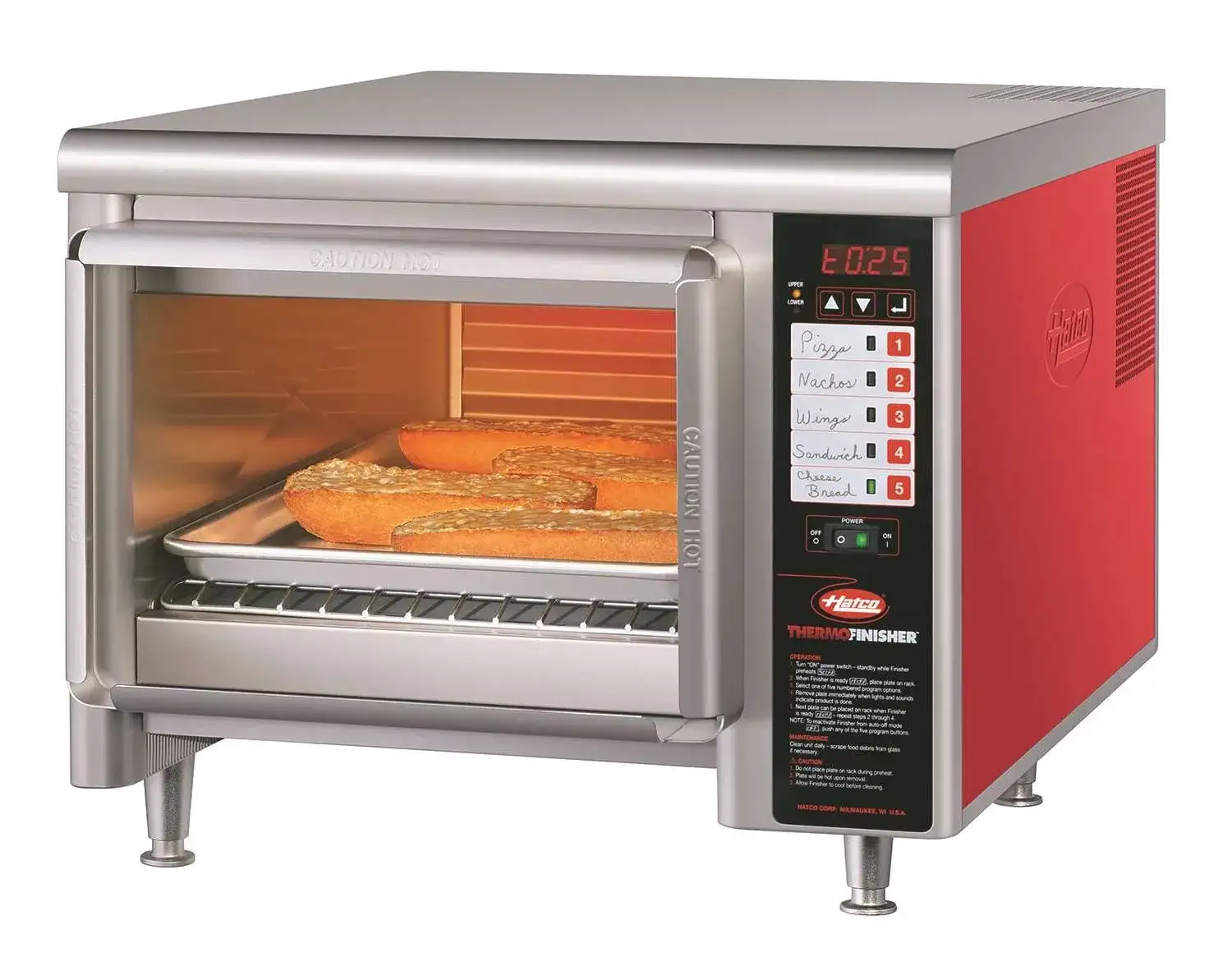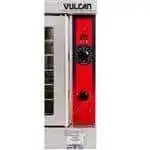
3 Commercial Convection Oven Buying Tips
Ovens are a focal point for any kitchen, and choosing the right one for your restaurant can improve efficiency and help boost profits. During your shopping endeavor, you’ll inevitably reach a crossroad between the standard oven versus convection Commercial Ovens. Since the 1950s, convection ovens have made their way into restaurant kitchens around the world, and for good reason.
Whether you’re on the lookout for a convection oven to add to your commercial kitchen or the old unit is about to give in, our comprehensive buyer’s guide will help you select a convection oven that is suitable to your needs.
The Mighty Convection Oven’s Best Tricks
A basic convection oven differs from a more common and widely-used thermal or radiant oven mostly in cooking time, efficiency, and results. Rather than heating the oven cavity, a convection oven utilizes fans by circulating air around the food and quickening the cooking process. In a conventional oven, the air around the food creates a stable pocket of insulation, allowing for generally slower cooking times. The heat spreads more evenly, eliminating hot spots and reduces the chance of undercooking some items and overcooking others. If you’re using a high-quality convection oven, you can bake multiple racks of cookies and they will all cook evenly without the need to rotate the baking sheets in the middle of cooking.
The efficiency in a convection oven is why most bakeries and pizzerias (where large quantities of small products are made quickly) prefer this type of oven over a conventional thermal oven.
A convection oven also reduces cooking time by as much as 25% to 30%, allowing busy commercial kitchens to supply more food products in a shorter period of time. And because the cooking time is cut down by a significant fraction, a convection oven produces food that is crispier on the outside and tastier and juicier on the inside. That’s certainly an advantage when you have a lot of customers constantly clamoring for good food served right away.
Additionally, the most efficient type of convection ovens (largely used in restaurants) are known as “true convection” or “third element convection”. As the name states, these ovens actually introduce a third heating element that heats the air before the fan circulates it onto the food. Most convection ovens omit this third element and, thus, force room-temperature air into the cavity of the oven. This can worsen the hot- and cold-spot phenomenon in our food!
So while convection ovens can potentially cook food 25% faster than a conventional thermal or radiant oven, basic convection ovens introduce a large issue in regards to even cooking temperature due to harsh cooking environments.
Types of Convection Ovens
Countertop Ovens
Countertop ovens are compact, allowing them to be used in commercial kitchens where space is constricted, such as convenience stores, concession stands, and offsite catering sites. Their size makes them easy to transport and install. Most convection ovens can accommodate several half-size sheet pans.
Floor Ovens
Floor models come in half-size or full-size. Some models also come in bakery-depth so you can load full-size sheet pans front to back. Some convection oven manufacturers design their units to be stackable, allowing you to double your production without taking up more of the floor space.
Understand The Convection Oven Basics
1. Fan
Many convection ovens provide you the ability to turn the fan on and off. This is especially important if you need to bake delicate items, such as cakes and soufflés, which may not hold up against the force of hot, blowing air. More expensive models also let you adjust the speed of the fan, which is useful if you want to have more control over the speed of the air blowing through the baking chamber.
2. Temperature and Time Controls
Convection ovens cook faster than standard ovens so you may have to adjust the temperature and cooking time of your recipes. Some premium models have a feature that automatically adjusts the temperature and cooking time of your recipe.
3. Cook-and-Hold
Some convection ovens have a cook-and-hold feature that will switch the oven into holding mode. This keeps the cooked food at the desired serving temperature without burning it.
4. Steaming
Some convection ovens have a feature that allows you to circulate steam around the baking chamber. This is helpful for making artisan breads that have shiny golden brown crusts and moist, fluffy insides. Steam also helps keep meats such as beef and turkey juicy without you having to add too much oil or seasoning.
Ovens with a steam function need access to a water connection. You may also want to consider installing a water filter or softener to ensure that the water quality in your area does not affect your finished product.
5. Manual and Programmable Controls
Convection oven controls can either be manual or programmable. Programmable controls allow you to create recipe programs that can be activated with a single push of a button. This is helpful if you have a lot of unskilled labor in your staff.
Manual controls, on the other hand, provide operators with a lot of flexibility. Professional chefs prefer manual controls because it lets them adjust their cooking settings as needed.
Tailor Your Search to Your Operation
1. Go for durability
Convection ovens are typically made of stainless steel or galvanized steel. Stainless steel, which is corrosion-resistant, is the material of choice for those who plan to use their ovens for heavy-duty applications. Galvanized steel is a more affordable option, although it is not as corrosion-resistant as stainless steel and will not last as long.
Another factor to look at is how the metal panels are held together. High-end models use welded steel, which holds better than bolted models.
2. Look at the interior
Convection oven interiors are typically made from aluminized steel, which is the most economical option that doesn’t compromise on strength and durability. Some ovens have porcelain interiors, which are smooth and easy to clean, thus reducing the growth of bacteria that can occur from food spills. However, porcelain interiors can crack or wear out faster than aluminized steel.
Some interiors also have smooth, coved corners, getting rid of the straight edges and corners where food spills can gather and create bacterial growth.
3. Check the doors
Convection oven doors can either be made from tempered glass or solid metal. Tempered glass doors let you look at the contents without opening and letting the heat out. Solid doors, on the other hand, are more durable and have better heat retention. However, constantly opening solid doors to check on your products could lead to heat loss and higher energy costs.
Doors can also be dependent or independent. Dependent doors open at the same time using a single handle. They let you open both doors with one hand only, which is useful when you’re holding a tray of food products with the other hand. Independent doors are not as convenient because they have separate handles. The advantage of independent doors is that they don’t produce as much heat loss as dependent doors.
4. Find the right size
The size of the convection oven you choose depends on how many food products you need to prepare every day. Larger convection ovens will obviously fit in more products, typically holding up to 9 to 12 sheet pans at one time.
Most commercial convection ovens can accommodate 2 ½” deep pans, with adjustment for 4” pans that are used for taller items such as breads. If your business is rapidly growing and you anticipate that you may need more convection ovens in the future, consider going for a stackable model so you can save floor space.
5. Choose between gas and electric options
Convection ovens rely on gas or electricity for fuel. Gas convection ovens typically heat up more quickly. However, even gas-powered ovens will need to have an electric connection to power their fan motors.
For many commercial kitchen operators, electric convection ovens are the more viable option. Electric ovens can provide more uniform temperatures that result in uniform cooking. In some areas, however, electricity can be cost-prohibitive, which is why manufacturers still provide gas options for their customers.
6. Get the proper ventilation system
Before you purchase a convection oven, make sure you have the right commercial hood and other ventilation equipment in place. Check the local regulations and be sure that you are in compliance with all kitchen ventilation rules.
All in all, you’ll want to research each individual convection oven in your purchase considerations, noting the types of heating elements and fan mechanics. CKitchen can help you wade through the pros and cons in order to get the right oven for your needs!



